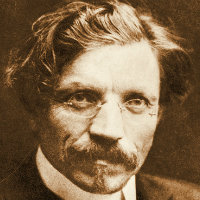The Modern Jewish Condition: A Study in Yiddish Literature
The demographic surge in European Jewry of the nineteenth and early twentieth centuries generated a parallel surge of writing in Yiddish, the vernacular of Ashkenzi Jews and their descendants. The varieties of modern Jewish life were formulated and argued out in several languages, but Yiddish was the dominant register for articulating the joys and anxieties, laughter and misery, yearnings and ruptures that attended this phase of modern Jewish life. From 1806 to 1810 Rabbi Nahman of Bratzlav spun Yiddish stories for his Hasidic followers; a century later Yitzhok Leybush Peretz in Warsaw published modern stories “in the manner of” Rabbi Nahman; and in the darkest days of the Second World War the poet Jacob Glatstein in New York projected the voice of Rabbi Nahman to reawaken the will to engage in everyday life. Yiddish captured the personal and national experience throughout the most eventful period in Jewish history in an ongoing conversation that not even the Holocaust—in Yiddish, the khurbn—could interrupt.
Selected from the immense body of Yiddish writing, Harvard professor Ruth Wisse will guide us through a few of its most penetrating and provocative works by Sholem Aleichem, Isaac Bashevis Singer, Chaim Grade, and others. We will highlight the war of ideas that was suppressed in some writers and powerfully on display in others. We will try to free Yiddish from the shawls of nostalgia and kitsch in which it is all too often wrapped, and to demonstrate how Yiddish literature holds the key to understanding Jewish modernity.
Key Texts & Topics
- Selections and stories from Max Weinreich, Nahman of Bratzlav, Sholem Aleichem, I.L.Peretz, Lamed Shapiro, Isaac Bashevis Singer, Jacob Glatstein, and Abraham Sutzkever
- S. Ansky, The Dybbuk
- Chaim Grade, “My Quarrel with Hersh Rasseyner”

